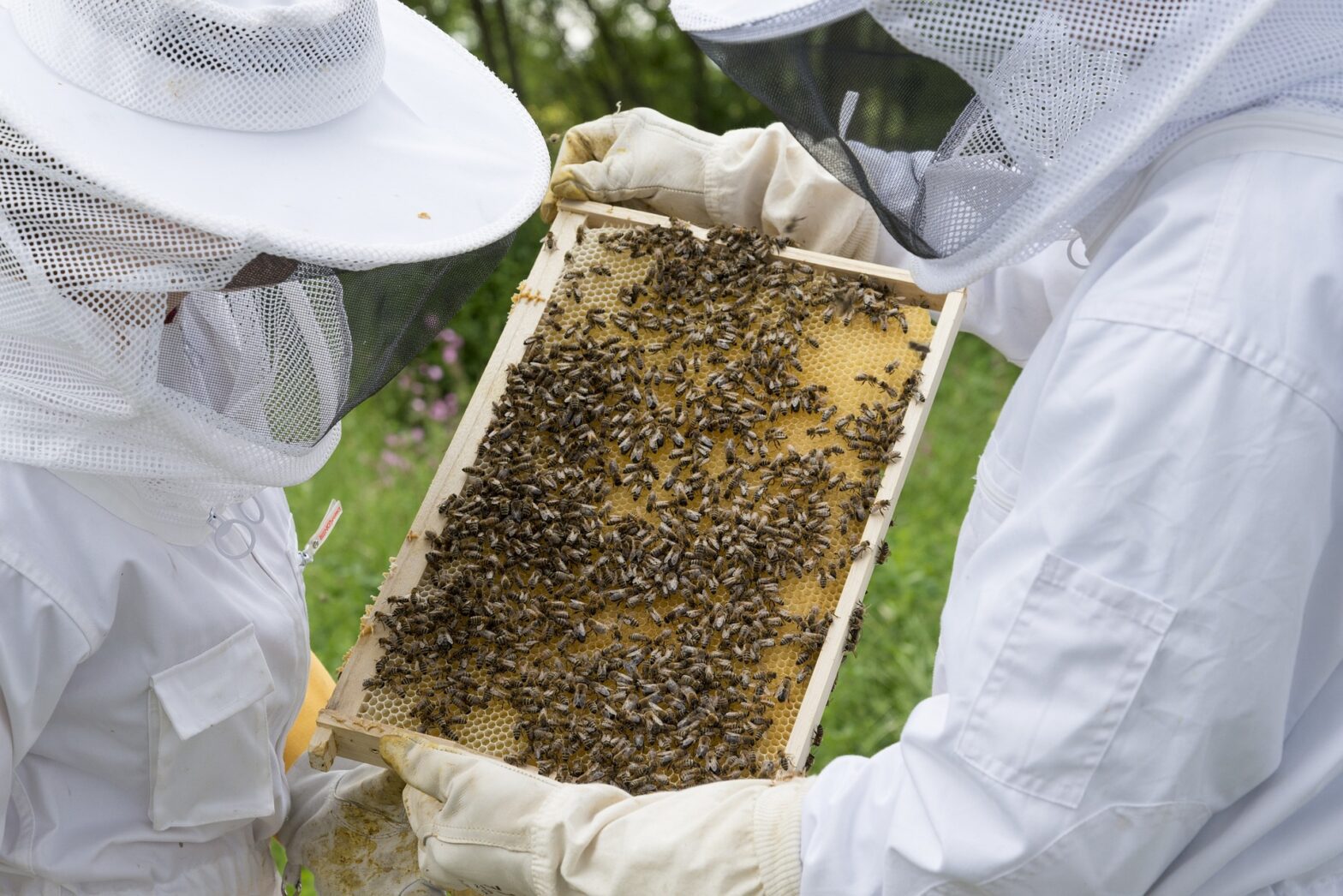For most beekeepers, conducting hive inspections every 7 to 10 days during the active season is essential. This schedule strikes a balance between monitoring your bees’ progress and minimizing disturbances that could stress the colony. Start each inspection by observing activity around the hive entrance. Are the bees foraging, collecting pollen, and moving in and out steadily? These are signs of a healthy hive. Keep an eye out for unusual behaviors like robbing or sluggishness, which might signal problems such as disease or pests. A calm, deliberate approach during your inspections helps ensure the bees remain relaxed while you work.
Inside the hive, there are several critical elements to assess. Look for signs of a healthy queen, such as eggs, larvae, or spotting the queen herself. Examine the brood pattern—it should be consistent and evenly distributed, indicating a productive queen. Check the frames for honey stores, pollen, and freshly drawn comb. Stay alert for any signs of trouble, such as varroa mites, wax moth damage, or symptoms of foulbrood, and take immediate action if necessary. If the hive appears overcrowded, consider adding another box to prevent swarming and provide space for the colony to grow. Inspections also help you stay ahead of seasonal shifts. Early in spring, ensure the colony has sufficient food stores to sustain them until nectar flows. In late summer and fall, focus on strengthening the hive for winter survival. Regular checks not only support the health and productivity of your bees but also deepen your understanding of their needs, enabling you to thrive as a beekeeper and maintain a flourishing apiary.
Things to look for when reading your frames

Eggs
Inspecting eggs can tell you a lot about your hive’s health and queen activity. On the first day, freshly laid eggs should be standing upright in the center of the cell. By the second and third days, these eggs will start to tilt and eventually lie down, taking on a “C” shape as they prepare to hatch into larvae.
Larvae
When inspecting bee larvae, you’re looking for signs of healthy development. Freshly hatched larvae appear as tiny white “C”-shaped grubs nestled at the bottom of their cells. As they grow, they become plumper and fill more of the cell. Healthy larvae should be pearly white, glistening with royal jelly, and have a uniform appearance. Any discoloration, dryness, or unusual texture could indicate issues like disease or poor nutrition.

Capped Brood
When inspecting capped brood, you’re looking for a healthy, uniform pattern across the comb. Capped brood cells should have a slightly domed, tan-colored wax covering, indicating developing pupae. A consistent, tightly packed brood pattern suggests a strong, fertile queen and a thriving colony. Irregular patterns, sunken or perforated caps, or discolored coverings can signal problems such as disease, pest infestations, or queen issues that may need further investigation.

Capped Honey
Look for cells sealed with a smooth, white wax cap, indicating the bees have fully ripened the honey and it’s ready for long-term storage. Capped honey should be arranged neatly, often in the upper corners or edges of the brood frames, or filling entire frames in honey supers. The wax cappings should appear clean and uniform. Uneven or patchy cappings could suggest incomplete ripening or disturbances in the hive. Properly capped honey signifies a healthy, productive colony preparing for the future.
Nectar
Look for shiny, translucent liquid stored in open cells. Nectar is a sign of active foraging and a steady food supply for the colony. Over time, the bees will fan the nectar to reduce its moisture content, transforming it into honey. Healthy nectar storage appears clean and glistening, with no signs of fermentation or discoloration, which could indicate contamination or hive stress. Observing ample nectar in your hive is a positive indicator of a thriving colony and productive environment

Pollen
Look for brightly colored pellets stored in open cells, often arranged near the brood. These pollen stores come in a variety of colors, depending on the flowers the bees have visited, and they should appear vibrant and tightly packed. Pollen is essential for brood rearing, as it provides the protein needed for larval growth. Healthy pollen stores indicate active foraging and a well-balanced diet for the colony. If you notice a lack of pollen, it may signal a foraging issue or the need for supplemental feeding during times of scarcity.
Bee Bread
Look for cells filled with a mix of pollen and nectar that has been packed down and fermented by the bees. Bee bread typically appears as multi-colored layers within a cell, reflecting the diverse sources of pollen collected. The fermentation process makes it more digestible and nutrient-rich, providing essential protein and vitamins for the colony, especially for brood rearing. Healthy bee bread should look firm, slightly shiny, and have a pleasant, fermented aroma. A good supply of bee bread indicates a well-fed colony and supports strong, healthy brood development.
Conducting thorough and regular hive inspections is an essential skill for any beekeeper. By learning to read the frames effectively, you gain invaluable insights into the health and needs of your colony. From observing activity at the hive entrance to assessing eggs, larvae, brood patterns, and food stores, every inspection is an opportunity to support your bees and address potential issues early.
Remember, a calm and deliberate approach not only minimizes stress on the bees but also allows you to connect more deeply with their fascinating world. With practice and attention to detail, you’ll become adept at understanding your hive’s unique story, ensuring a thriving and productive apiary season after season. Happy beekeeping!

